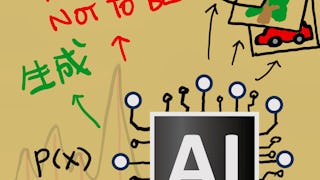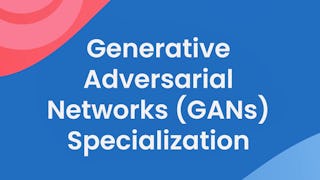Generative AI for Audio and Images: Models and Applications offers an in-depth exploration of how modern generative models such as Variational Autoencoders (VAEs), Generative Adversarial Networks (GANs), Transformers, and Diffusion models are used to create, manipulate, and enhance audio, image, and video content.



Generative AI for Audio and Images: Models and Applications


Instructors: Anahita Doosti
Included with 
Skills you'll gain
Details to know

Add to your LinkedIn profile
November 2025
17 assignments
See how employees at top companies are mastering in-demand skills

There are 4 modules in this course
This module introduces the foundations and core concepts of AI-generated audio. Learners explore why audio generation is uniquely challenging, such representation and evaluation challenges. They learn how audio is represented and processed, compare waveform and symbolic formats, and common audio data formats and Python libraries for working with audio. The module also examines methods for evaluating generated audio and provides a framework for categorizing audio generation approaches by their functionality and human–AI collaboration level. It concludes with a historical overview of AI-generated audio, tracing its evolution from early rule-based methods to modern deep generative models.
What's included
21 videos3 readings4 assignments2 discussion prompts
Building on the fundamentals, this module dives into advanced models for audio generation. Learners study Variational Autoencoders (VAEs) and their variants, and how they apply to melody generation and speech synthesis. The module also explores transformer-based models, such as Music Transformer, AudioLM, and FastSpeech, as well as diffusion-based models like DiffWave and Stable Audio. Through these lessons, learners gain a comprehensive understanding of how modern generative architectures produce realistic, high-quality audio and music.
What's included
31 videos2 readings4 assignments
This module transitions from audio to image generation, introducing the principles and evolution of image and video synthesis. Learners examine key architectures like GANs and VAEs, explore how adversarial training works, and study variations such as Conditional and Progressive GANs, Pix2Pix, and CycleGAN. The module also connects theory to practice by showcasing creative and commercial applications—from art and design to data augmentation—demonstrating how generative models enhance realism and variety in visual outputs.
What's included
22 videos3 readings5 assignments
In this module,we explore the final stages of what large language models (LLMs) can offer. You’ll learn how and when to use fine-tuning, along with the pros and cons of different approaches. Throughout the course, you will receive relevant assignments that prepare you for the capstone project: building a fully functional chatbot
What's included
21 videos1 reading4 assignments
Offered by
Explore more from Algorithms
 Status: Preview
Status: PreviewUniversity of Colorado Boulder
 Status: Free Trial
Status: Free Trial Status: Free Trial
Status: Free TrialDeepLearning.AI
 Status: Preview
Status: PreviewNortheastern University
Why people choose Coursera for their career





Open new doors with Coursera Plus
Unlimited access to 10,000+ world-class courses, hands-on projects, and job-ready certificate programs - all included in your subscription
Advance your career with an online degree
Earn a degree from world-class universities - 100% online
Join over 3,400 global companies that choose Coursera for Business
Upskill your employees to excel in the digital economy
Frequently asked questions
To access the course materials, assignments and to earn a Certificate, you will need to purchase the Certificate experience when you enroll in a course. You can try a Free Trial instead, or apply for Financial Aid. The course may offer 'Full Course, No Certificate' instead. This option lets you see all course materials, submit required assessments, and get a final grade. This also means that you will not be able to purchase a Certificate experience.
When you enroll in the course, you get access to all of the courses in the Specialization, and you earn a certificate when you complete the work. Your electronic Certificate will be added to your Accomplishments page - from there, you can print your Certificate or add it to your LinkedIn profile.
Yes. In select learning programs, you can apply for financial aid or a scholarship if you can’t afford the enrollment fee. If fin aid or scholarship is available for your learning program selection, you’ll find a link to apply on the description page.
More questions
Financial aid available,

